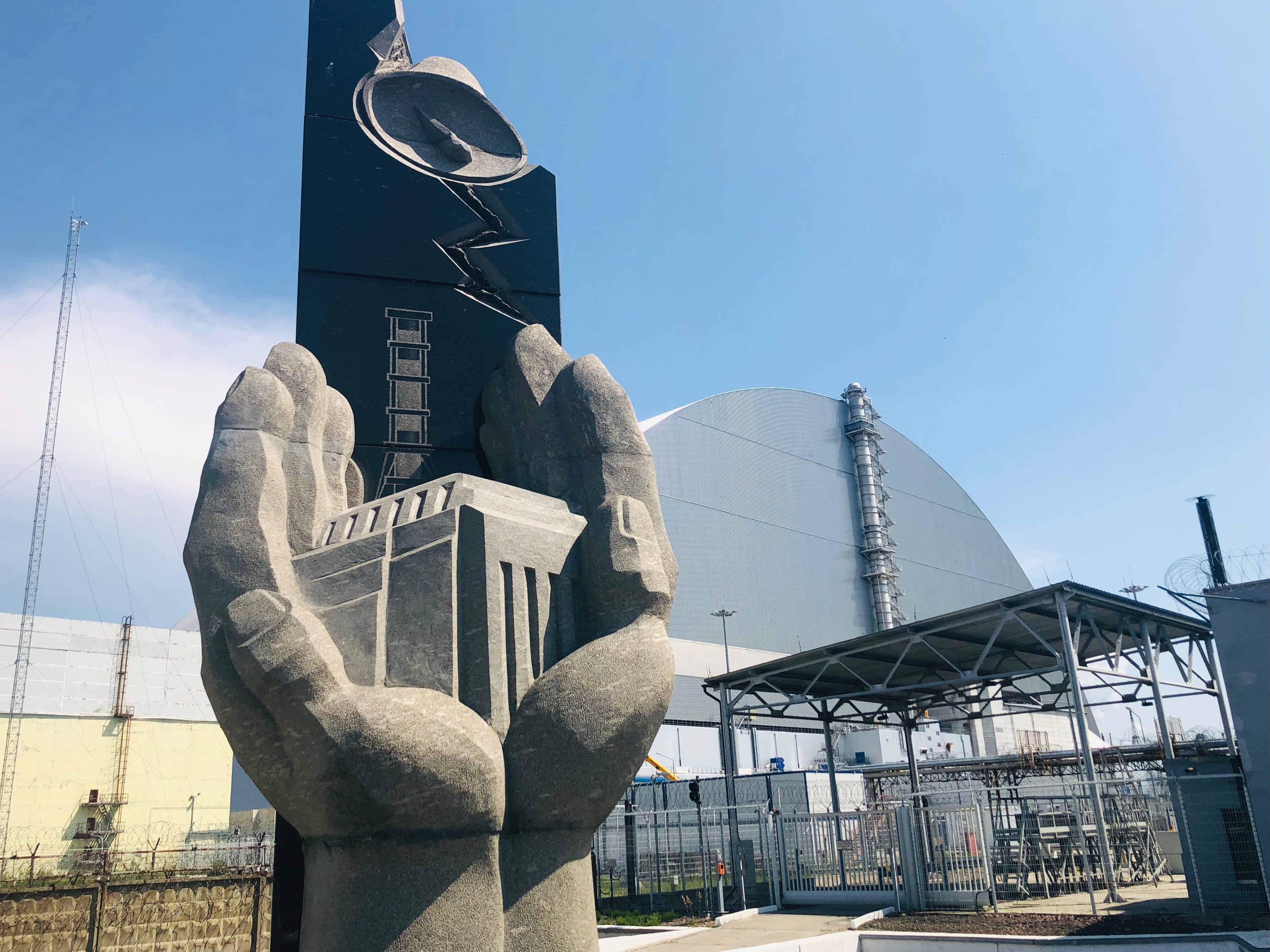‘A very real problem’: How resurgent nuclear reactions at Chernobyl might be dealt with to avert disaster
Robots and gadolinium nitrate spray among interventions under consideration as scientists concerned by 40 per cent spike in fission activity in reactor room inaccessible since notorious 1986 meltdown

Scientists in Ukraine were alarmed last week to encounter unexpected fission reactions erupting deep within the bowels of the abandoned Chernobyl power plant, scene of the world’s worst nuclear disaster when a spectacular meltdown occurred on 26 April 1986, leading to mass evacuations and a failed Soviet cover-up.
Experts from the Institute for Safety Problems of Nuclear Power Plants (ISPNPP) in Kiev reported a 40 per cent increase in neutron emissions from 2016 levels in a chamber rendered inaccessible by the catastrophe.
The activity is seemingly the fault of the New Confinement Shelter that was erected to cover the former reactor site five years ago, a giant steel arch structure that, unlike its shoddier predecessor, prevents rainwater entering, unwittingly eliminating a key element that turns out to have played a role in suppressing the neutrons.
The ISPNPP is now engaged in monitoring the situation and assessing whether a potentially dangerous intervention might become necessary to prevent a further explosion at the site if stability is not restored.
This might involve drilling into what was once Subreactor Room 305/2 to soak the smouldering uranium fuel masses buried within with gadolinium nitrate or sending in robots capable of withstanding the still-glaring radiation and humidity to install neutron and temperature sensors or boron cylinders to act as control rods, sopping up the neutrons.
But how effective might such efforts be and what are the dangers?
“The suggested measures are proportionate and in principle should be implementable,” Professor Neil Hyatt of the University of Sheffield told The Independent. “However, this will not be without hazard.”
He continues: “The sarcophagus is partially collapsed in some areas, with considerable debris and obstructions, which, combined with the high radiation field and radioactive dust, means that human access and robot deployment are challenging to accomplish.
“By introducing the neutron absorbers, either in a liquid (such as gadolinium nitrate spray or foam) or solid form (such as boron steel bars, or ball bearings), the neutron production can be very significantly suppressed.
“Either approach is compatible with a hole drilled into the room for access, which would also allow camera observation of the fuel debris material for the first time… At the moment the potential benefit of these interventions would not seem to outweigh the risk of human intervention, it is certainly necessary that the situation continues to be closely monitored, but it would be sensible to consider how such an intervention should be made, given that very careful planning will be required.”
Professor Hyatt, whose team has studied the corrosion of the lava created by the original meltdown, believes that Chernobyl “is a problem stabilised, not a problem solved” and that while the new shelter at the site offers approximately a century of further protection: “It is very important that European governments in particular scale up their technical and financial support for Chernobyl decommissioning.”
Dr Jonathan Cobb of the World Nuclear Association agrees, telling The Independent that: “Installing neutron or temperature sensors would help characterise what is happening better, if that is required.”
He points out that spraying gadolinium nitrate is a technique that has already been used at Chernobyl in the past to great effect and could be again.
But for Dr Paul Dorfman of University College London’s Energy Institute and the Nuclear Consulting Group, the new reactions constitute “a very real problem” and the responses proposed so far are unconvincing.
“Radiation affects robotics,” Dr Dorfman told The Independent. “Which means any robotics could get stuck. Also, if things are happening quickly, there may not be enough time to deploy and service robotics.
“Any intervention will, without doubt, be both technologically difficult and deeply risky,” he cautions. “And the issue (like all nuclear risk) is complicated.”
While much remains unknown about the current stability of Subreactor Room 305/2 and how the situation might develop, the stakes involved could not be clearer.
The original blast at the sight was caused by human error, a mishandled safety experiment that saw staff at the plant’s Unit Four reactor shut down its power-regulating and emergency systems, also withdrawing most of the control rods from the core while leaving the reactor running at seven per cent power.
These steps inadvertently sparked a chain reaction that sent the core out of control, with several explosions triggering a large fireball that blew off the heavy steel and concrete lid of the reactor as the core itself went into meltdown.
An ensuing fire in the graphite reactor core duly released large amounts of radioactive material into the atmosphere, where it was carried great distances across continental Europe on the wind.
The population of the neighbouring city of Pripyat had to be swiftly evacuated and the zone has been off-limits ever since, reclaimed by the natural world.
The disaster was recently revisisted in the 2019 HBO drama series Chernobyl, starring Jared Harris, Stellan Skarsgard and Emily Watson.
Subscribe to Independent Premium to bookmark this article
Want to bookmark your favourite articles and stories to read or reference later? Start your Independent Premium subscription today.

Join our commenting forum
Join thought-provoking conversations, follow other Independent readers and see their replies